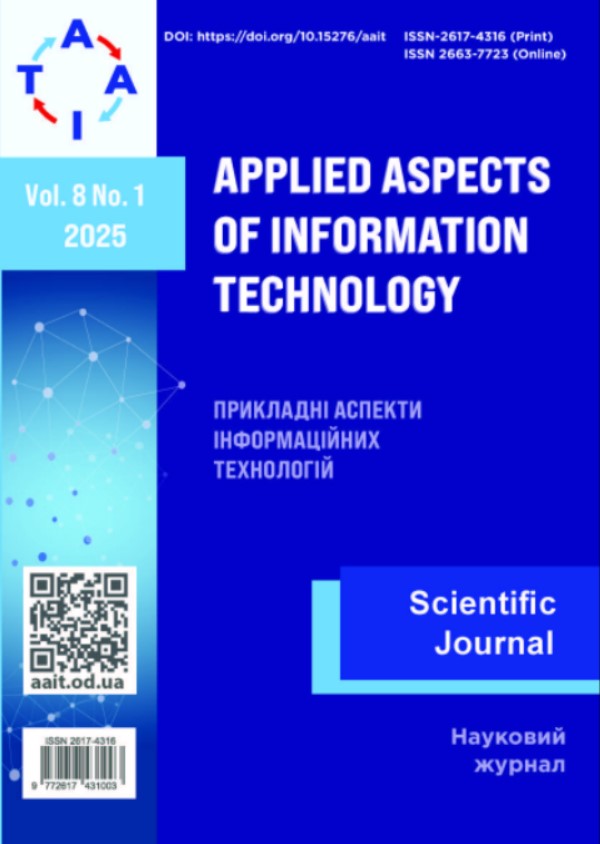Integration of physiological factors into a mathematical model of the human eye condition
DOI:
https://doi.org/10.15276/aait.08.2025.6Keywords:
human eye, mathematical modeling, integral index, nonlinear dependencies, optimization methods, adaptability, monitoring, predictionAbstract
Mathematical models of the human eye serve as adaptive tools for analyzing and predicting ophthalmological parameters, considering their interrelations and individual patient characteristics. Their application in ophthalmology enhances the quality of diagnostics, monitoring, and treatment, ultimately improving patients' quality of life. The developed eye condition model is based on a mathematical function that integrates physiological eye parameters, each assigned a weight coefficient to determine its impact on the overall condition index. The model accounts for complex nonlinear interactions between parameters, allowing for a more accurate representation of physiological processes. To optimize the weight coefficients, the L-BFGS-B method is employed—an iterative algorithm that efficiently minimizes the loss function and ensures high accuracy in adapting the model to individual patient data.This model offers several advantages: it enables early diagnosis of diseases such as glaucoma, cataracts, and macular degeneration, tailors treatment plans based on individual patient parameters, and facilitates disease monitoring and progression prediction for timely therapy adjustments. Furthermore, the model can be integrated with modern technologies, including virtual and augmented reality systems, as well as artificial intelligence for automated diagnostics. Thus, the proposed mathematical model serves as a universal tool for analyzing eye conditions and developing innovative diagnostic and therapeutic technologies. By incorporating parameter interdependencies and their effects on the physiological state of the eye, it provides ophthalmologists with a powerful instrument for enhancing diagnostics, prediction, and disease monitoring in vision healthcare.










